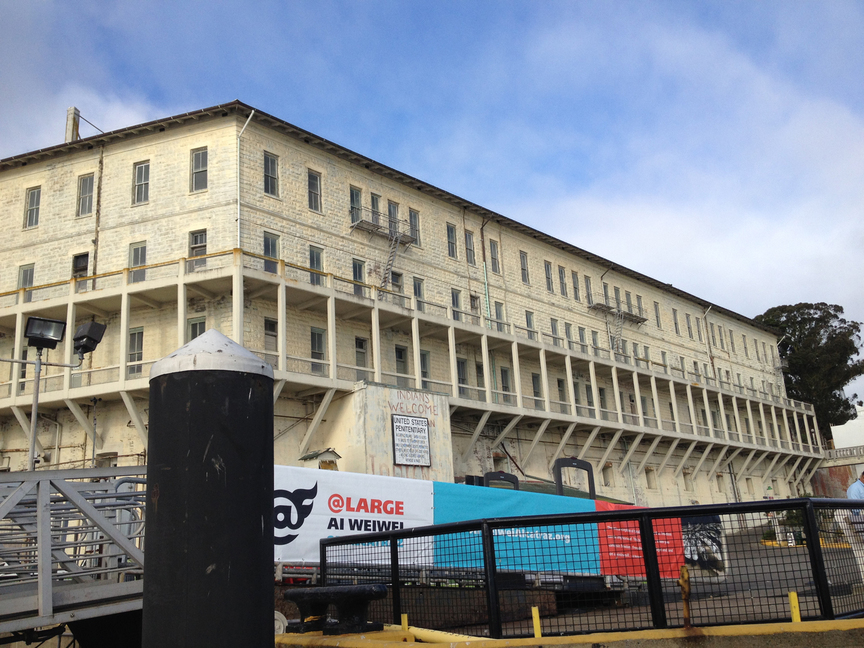
R
E
V N
E
X
T
On September 27, 2014, seven site-specific installations by Ai Weiwei debuted on San Francisco’s Alcatraz Island. Installed across four locations on the historic site, the all-new works, including sculptures, sound art and mixed-media installations, focus on themes of human rights and freedom of expression. The installations are part of the exhibition “@ Large: Ai Weiwei on Alcatraz,” inspired by the island’s past—as a military fortress in the 19th century, a notorious federal penitentiary in the early to mid-20th century, and a significant site of Native American activist history—as well its present role as one of the most visited national parks in the United States. The artworks in “@ Large” explore the social issues of incarceration and the definitions of liberty, justice and human rights, by looking at various people’s experiences, as well as Ai’s own struggles for freedom as an artist in China. Incidentally, Ai could not physically visit Alcatraz—with his passport still in the hands of the Chinese government, as a result of his arrest for alleged tax fraud in 2011—so all of the works were developed in his Beijing studio and assembled at Alcatraz by the For-Site Foundation (the organizers of the exhibition), local volunteers, and members of Amnesty International.
A few days prior to the official opening of the exhibition, ArtAsiaPacific boarded a ferry from San Francisco to Alcatraz Island to see a preview of the show. Here’s a look at Ai’s new installations in “@Large.”



